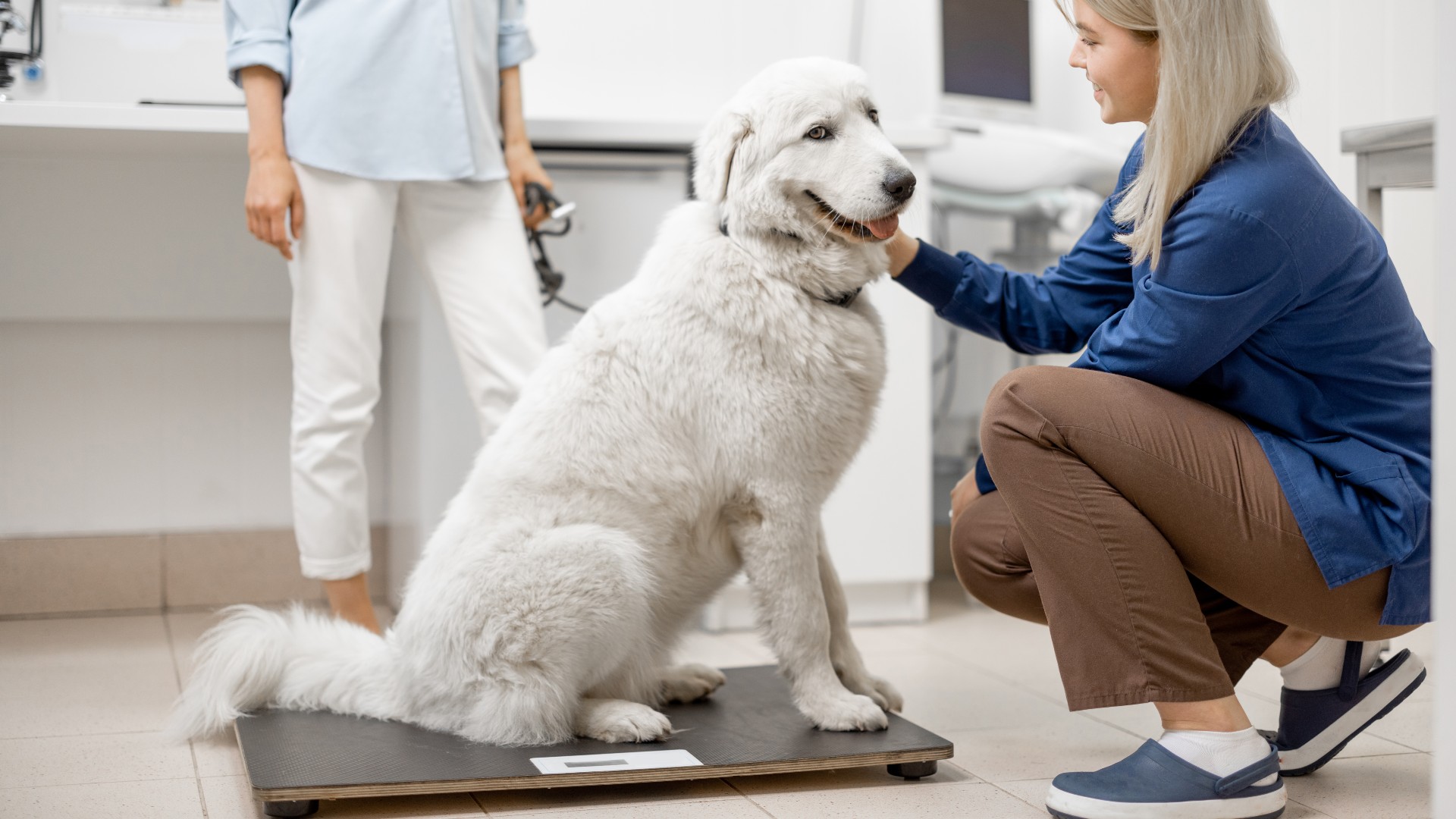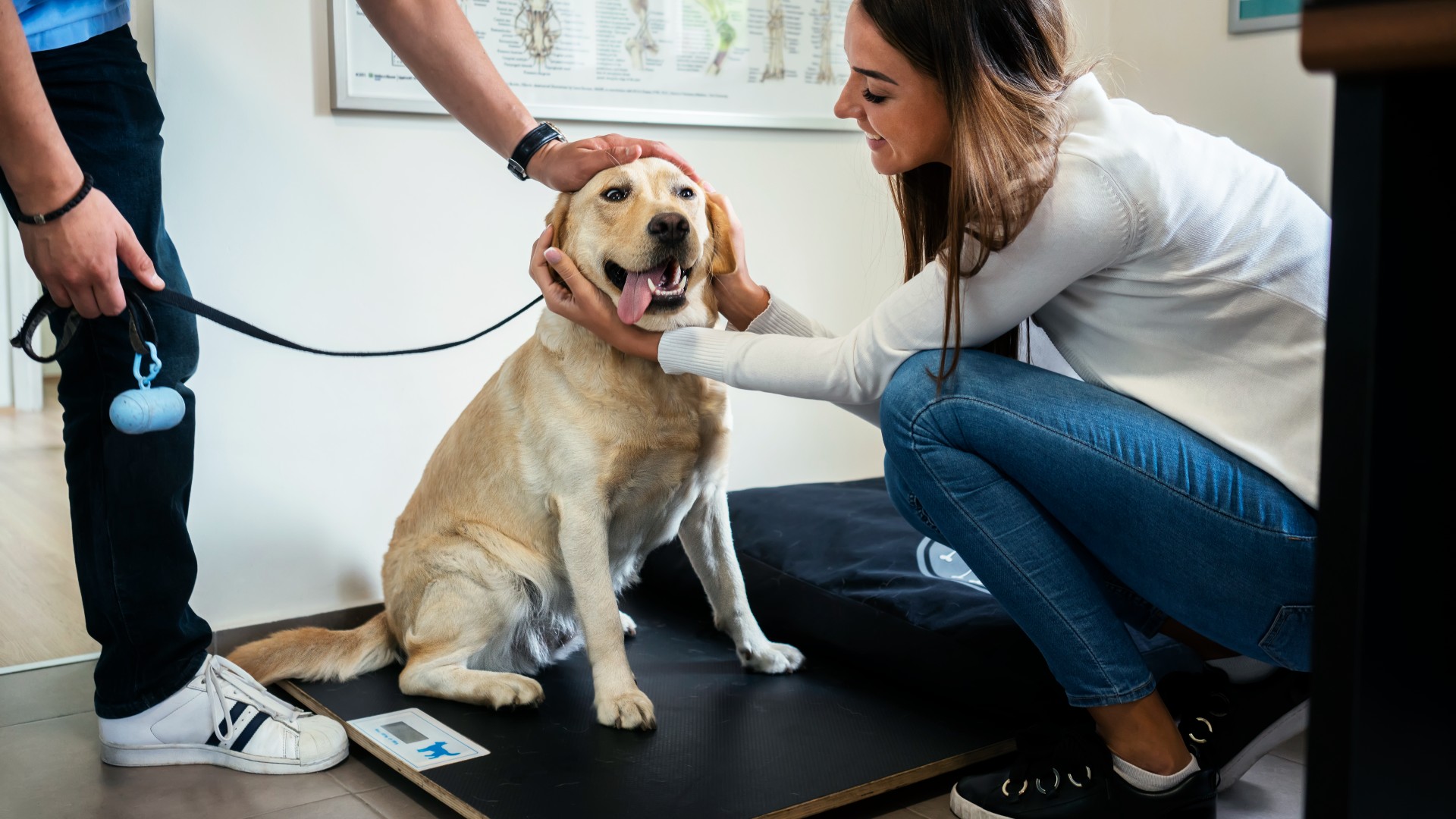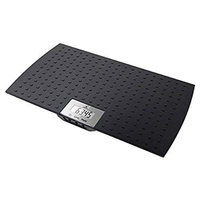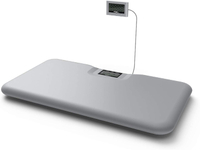How to weigh a large dog at home
Figuring out how to weigh a large dog at home can be a challenge, but we're here to help

It can be challenging to weigh a large dog at home, though it's essential if you want to keep an eye on your canine's health. Whether you're concerned that your dog is gaining or losing weight unexpectedly or you want a regular check-in, we'll help you find the best ways to monitor your dog's weight without taking a trip to the vet.
Especially if you've got a large dog, it's worth investing in the best weighing scales for pets rather than making do with regular bathroom scales. These are specifically designed to accommodate four-legged pets and often have a side-mounted display, so you can easily see the reading and even get an accurate measurement when your dog is moving around.
But that's only part of the process when you need to weigh a large dog at home. If a smaller dog likes to avoid getting weighed, you can easily pick them up and put them in place, which isn't the case for larger dogs. We'll guide you through everything you need to know, including what to do if the whole process sounds pretty stressful to you.
If your large dog is a bit heavier than you'd like, you can use our guide on what to do if your dog is overweight to help get things back under control. You'll still want to weigh them regularly to check in on their progress, so learning how to weigh a large dog at home can save on vet trips, too.
How often should I weigh my dog?
The frequency with which you weigh your dog will largely depend on their age, current weight and whether or not they have any health issues. For dogs that are considered fit and healthy and who fall within the recommended weight range for their breed, weighing them at home once every six months is sufficient.
In other cases, you may want to weigh your dog more frequently. For instance, senior dogs with mobility issues are at a greater risk of weight gain and dogs that are already overweight or obese also need to be monitored regularly. In both of these examples, or if your dog has other health issues that make keeping their weight in check a challenge, monthly weigh-ins are recommended.
How do I weigh a large dog at home?
Now to the slightly more tricky part - how to weigh your large dog at home. There’s no denying that this isn’t as straightforward as weighing smaller dogs who are far easier to manage and whose smaller build makes them a better candidate for most at-home floor scales. Still, that’s not to say weighing bigger breeds at home can’t be done.
Owners of smaller dogs can step onto the scales while holding their canine companion, then simply subtract their own weight from the total number to calculate the weight of the dog. Unfortunately owners of larger breeds will be unable to do this with their humongous hounds. In order to get the weight of a larger breed without the use of vets' scales, you’re going to need to invest in a large floor scale that you can purchase either online or from a speciality large-breed pet store.
We have to warn you, these don’t come cheap. That being said, they are incredibly durable and built to last, so once you’ve bought it, you’ll likely have it for the duration of your dog’s life and well beyond. To help you find a suitable at-home scale for your larger-than-life furkid, here are two of our favorite options:
W.C Redmon Precision Digital Pet Scales
RRP: $99.99
This scale lets you weigh your dog in pounds or kilos, plus it comes with a previous weight memory feature that reminds you of what your dog weighed the last time they were on the scales. It has a low-battery indicator and can accommodate dogs up to 225 lbs.
Redmon XL Field Scale Plus Remote Display
RRP: $199.99
Able to handle a whopping 330lbs, this impressive scale will comfortably hold your humongous hound and it comes with a comfortable 35.5 inches wide and 19.7 inch deep textured platform. It comes with two displays, a large readout display on the face of the scale plus a remote display that includes a 72 inch cable, and once again, you can weigh your pup in pounds or kilos.
What if my dog doesn’t like being weighed?

While some dogs will hop on the scales quite happily and sit still for the entire duration of being weighed, other dogs aren’t so comfortable with the process. Scales can feel slightly unstable beneath your dog’s paws, so it’s normal for them to feel insecure when being weighed.
The best thing to do is to weigh your dog at home from the time they’re a puppy and to reward them with lots of praise and a treat after they get off the scale. But don’t worry, if you adopted your dog later on in life, you can still desensitize them to the scale as an adult.
Clicker training is a great way to do this. When you introduce your dog to the scale and he sniffs it, click and reward him with one of the best dog treats. When he places a paw on the scale, click and reward again. Keep doing this until your dog is able to sit on the scale long enough for you to get an accurate weight reading.
Tips for weighing your dog
To help make weighing your large dog at home that bit easier, here are our favorite tips and tricks:
- Make use of the Hold function on your floor scales. Almost all scales that have been designed for pets feature a Hold button that you can press if your dog starts wriggling about to stabilize the reading.
- Always use the same scale to weigh your dog. Believe it or not, scales can differ by as much as 10lbs and so weighing your dog on a different floor scale than the one you usually use could cause you to get a discrepancy that tricks you into thinking your pup has gained or lost weight.
- Weigh your dog on a flat surface. This is really important as carpet alters the reading meaning that the weight you get is likely to be inaccurate. A wooden or tiled floor is the best place to conduct your dog’s weigh in.
- Always weigh your dog at the same time of day and preferably on an empty stomach and after they’ve been to the toilet. It can be good to do this first thing in the morning after you’ve taken them outside to relieve themselves but before you give them their breakfast. This will enable you to get the most reliable reading possible.
It's worth regularly weighing your dog, as it's a good way to keep an eye on changes that might suggest something's amiss. If they're starting to gain weight, it'd be a good idea to look into how much you should feed your dog, as an early intervention could make a big difference.
But if your dog is losing weight unexpectedly, there are several causes you can investigate. It doesn't necessarily mean something is wrong, but if you're wondering 'Is my dog sick?', we've put together a list of the top ten signs that you might need to head to the vet.
PetsRadar Newsletter
Get the best advice, tips and top tech for your beloved Pets

Kathryn is a freelance writer who has been a member of the PetsRadar family since it launched in 2020. Highly experienced in her field, she's driven by a desire to provide pet parents with accurate, timely, and informative content that enables them to provide their fur friends with everything they need to thrive. Kathryn works closely with vets and trainers to ensure all articles offer the most up-to-date information across a range of pet-related fields, from insights into health and behavior issues to tips on products and training. When she’s not busy crafting the perfect sentence for her features, buying guides and news pieces, she can be found hanging out with her family (which includes one super sassy cat), drinking copious amounts of Jasmine tea and reading all the books.


